The history of Taganrog is filled with significant historical events. He managed to visit the Greek settlement, and the Italian port, and the first base of the Russian fleet. Moreover, famous and outstanding cultural figures were born in the city - the writer A.P. Chekhov and the actress F.P. Ranevskaya. Many attractions are associated with these extraordinary people. Since the 17th century, a large trading port has been operating in Taganrog.
Today, Taganrog is more perceived as an industrial center, although it undoubtedly has untapped tourism potential. There are many architectural monuments, museums with valuable expositions, historical monuments, parks, and simply picturesque and pleasant places for walking.
What to see and where to go in Taganrog?
The most interesting and beautiful places for walking. Photos and a short description.
- Stone stairs
- Taganrog sea trade port
- Alferaki Palace
- Taganrog Art Museum
- Drama Theater named after A.P. Chekhov
- Museum of Urban Planning and Life
- Literary Museum of A.P. Chekhov
- Chekhov's house
- Chekhov's Shop
- Faina Ranevskaya Museum
- Cafe Freken Bock
- Museum of A. A. Durov
- Museum of I. D. Vasilenko
- House of Tchaikovsky
- Church of St. Nicholas
- Cell of St. Paul of Taganrog
- Monument to Peter I
- Monument to Alexander I
- Monument to A.P. Chekhov
- Sundial
- Park of Culture and Leisure named after Gorky
- Pushkinskaya embankment
- Seaside park
- Pavlovsk fortress
- Memorial of Glory on the Sambek Heights
stone stairs
The staircase was built at the expense of the merchant and philanthropist G. F. Depaldo in 1823. The building is 113 meters long, up to 7 meters wide and consists of more than 140 steps and 13 platforms. In the 1870s, trees were planted along the edges, in the 1930s, as a result of reconstruction, antique-style statues were added, and a square with fountains was laid out at the base. The last restoration of the attraction was carried out in 2006.
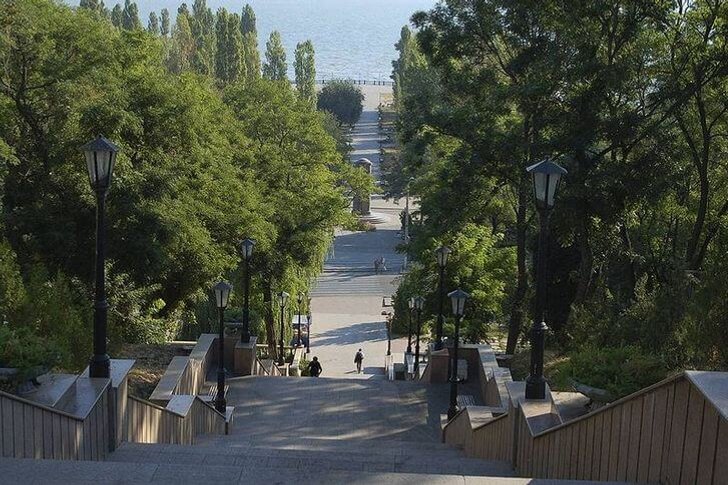
Taganrog sea trade port
The harbor on the Sea of Azov, founded by Peter I as the first naval base of the state. By the 18th-19th centuries it had become a major seaport through which grain, furs, iron, flax, caviar and other goods were traded. The second birth of the harbor occurred in the 1990s, when after a long break it was reconstructed and opened to foreign ships.

Alferaki Palace
A building in the Greek style, richly decorated with decorative stucco in the Baroque style. The building was erected in the middle of the 19th century for a wealthy citizen N. D. Alferaki according to the project of the St. Petersburg architect A. I. Stackenschneider. Already at the end of the century, with the assistance of A.P. Chekhov, a local history exposition was organized on its territory, which continues to work to this day. The museum presents the most valuable archaeological collections, finds of the 11th-13th centuries, as well as interior items of noble estates.
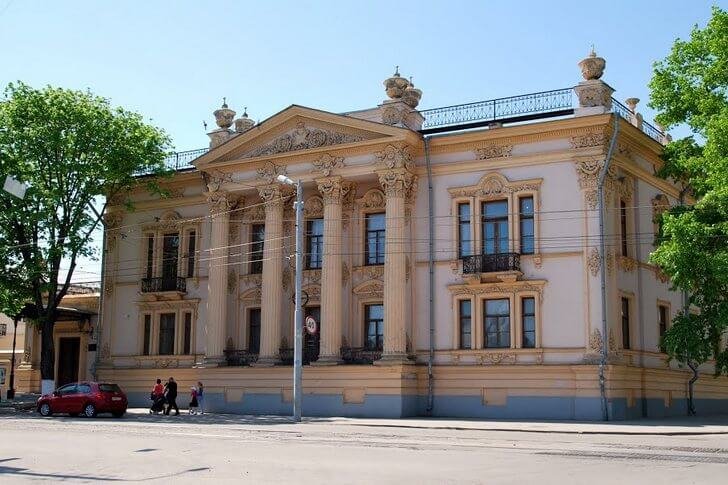
Taganrog Art Museum
The collection is housed in a historic building built in 1870, where the mayor lived in the 19th century. The museum was founded in 1898 with the participation of A.P. Chekhov and I.E. Repin. To date, the funds contain more than 7 thousand exhibits, but small exhibition areas do not allow to demonstrate even a small part of such a rich collection. Among the masterpieces are the works of Aivazovsky, Surikov, Levitan, Repin, Korovin.
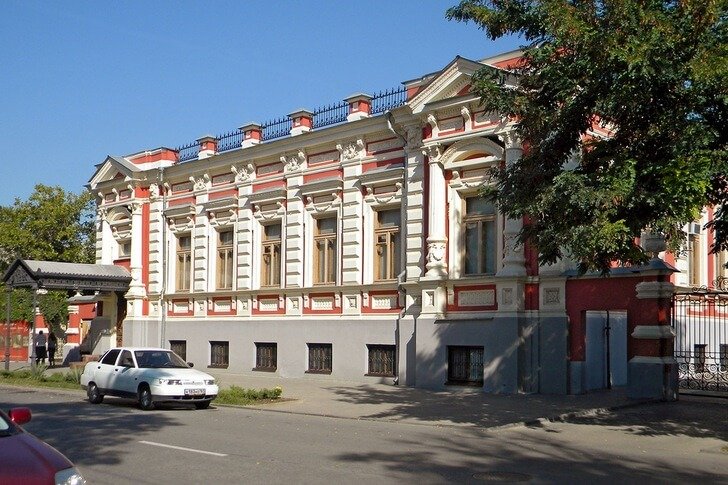
Drama Theater named after A.P. Chekhov
The theater stage was established in 1827, in 1866 it moved to a building erected according to the project of N.V. Trusov and K. Londeron. In the 19th century, the theater also hosted an opera troupe composed primarily of Italian actors. In the 20th century, the institution continued to develop even despite the events of the Second World War. Today the theater is an important cultural center of the city and the whole region.
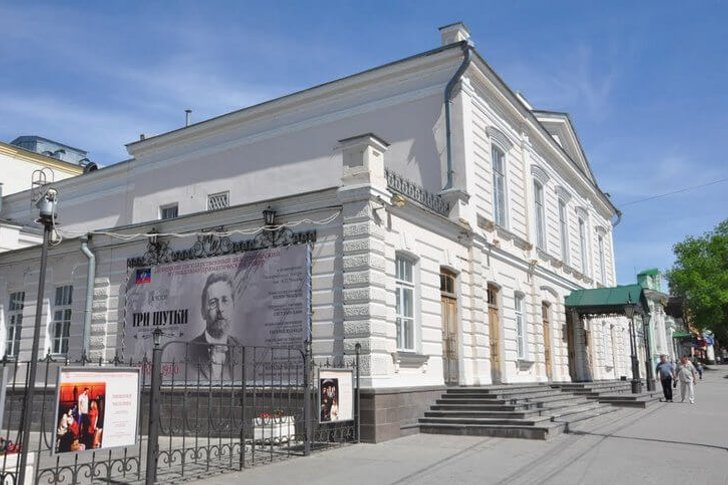
Museum of Urban Planning and Life
The only museum in Russia that reveals the themes of urban planning and everyday life. The collection is housed in a 1912 Art Nouveau mansion. The exposition was founded in 1981. It is dedicated to the change in the appearance of Taganrog since its foundation. The exhibits are photographs, drawings, paintings and plans, as well as pieces of furniture and decor.

Literary Museum of A.P. Chekhov
The museum is located in the building of the former men's gymnasium, where Anton Pavlovich once studied. The building was erected in the manner of Russian classicism according to the project of F.K. Boffo. The date of foundation of the museum is considered to be 1935, although most of the exhibitions of the complex opened in the 1980s. Permanent collections are dedicated to the life and work of A.P. Chekhov. Temporary vernissages are also regularly held on the territory.

"Chekhov's house"
Museum, which occupies a small wing, where A.P. Chekhov was born. The building was built in the middle of the 19th century from adobe bricks on the territory adjacent to the house, which belonged to the merchant A.D. Gnutov (the wing was rented out). The museum exposition began to work in the 1920s, a couple of years after the opening of the exhibition, a cherry orchard was planted around the building.

"Chekhov's Shop"
Another Chekhov's place in Taganrog - the shop is located on the territory of a brick building of the 1840s. In this place, the writer's father organized trade, as it was located at a busy crossroads with a high traffic of buyers. On the first floor there were commercial premises, rooms and a kitchen with a dining room, on the second floor there was the main living area in which the Chekhov family lodged. Today, the original furnishings have been recreated in the shop.
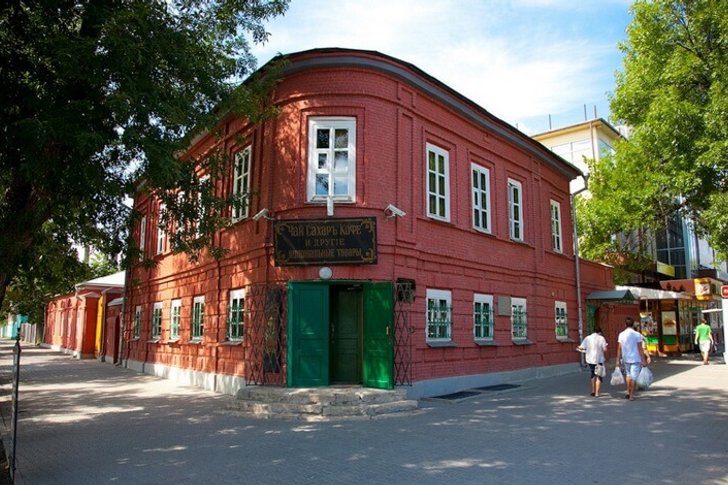
Faina Ranevskaya Museum
The opening of the museum in the house where one of the most prominent Russian actresses of the 20th century was born and raised was started in 1987 by Innokenty Smoktunovsky. Unofficially, the exposition was organized by Professor N.P. Zagray, who took care of the preservation of the interiors of the Feldman family's apartment. He hung a portrait of Faina Ranevskaya by the front staircase and placed a memorial plaque on the facade. The museum still exists in this form.

Cafe Freken Bock
Art cafe, created in 2009 near the house of Faina Ranevskaya in a brick mansion of the 19th century. The main concept of the institution is based on the work "The Kid and Carlson", the walls are decorated with photographs of the actress. Literary evenings and art exhibitions are held on the territory of the cafe, as well as theatrical performances. Since 2011, it has been one of the venues for the Chekhov Book Festival.
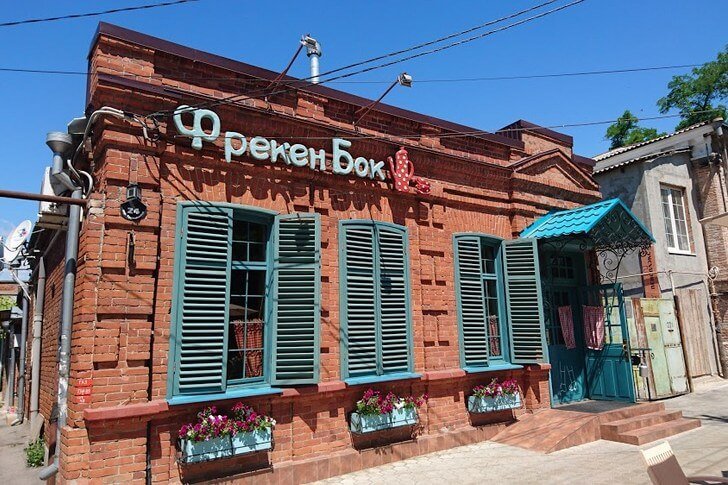
Museum of A. A. Durov
A. A. Durov is a representative of the Russian circus dynasty, who, during a tour in the 1920s, acquired two estates in Taganrog, where he settled with all the animals of his booth. In 1987, an exposition dedicated to the life of the artist was opened in one of the houses. The building itself is an architectural monument of the early 20th century, built in the Art Nouveau style. The collection contains documents, letters, contracts and things of A. A. Durov.
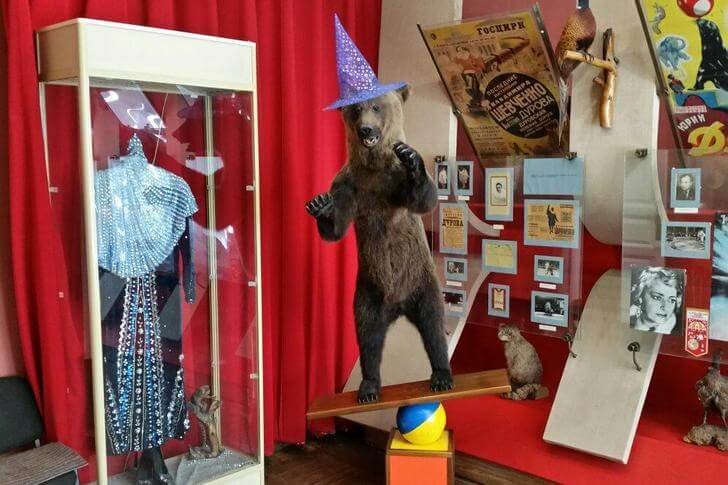
Museum of I. D. Vasilenko
I. D. Vasilenko is a Soviet writer who lived a significant period of his life in Taganrog. In 1988, a memorial museum was created on the territory of his house. The exposition is an illustration of Vasilenko's life and creative path, emphasizing the importance of his contribution to the development of literature. It will be interesting to look at the office where he worked on his works, as well as the personal belongings of the writer.

House of Tchaikovsky
A brick mansion of the late 19th century, where Ippolit Tchaikovsky, the brother of the famous composer, lived in the period 1883–94. Pyotr Ilyich visited the estate several times, as evidenced by a commemorative plaque mounted on the wall. After the Revolution, the building alternately housed a hospital, a library and a concert hall. A separate room-museum was organized in the 1970s. It operates as part of the concert and exhibition complex.
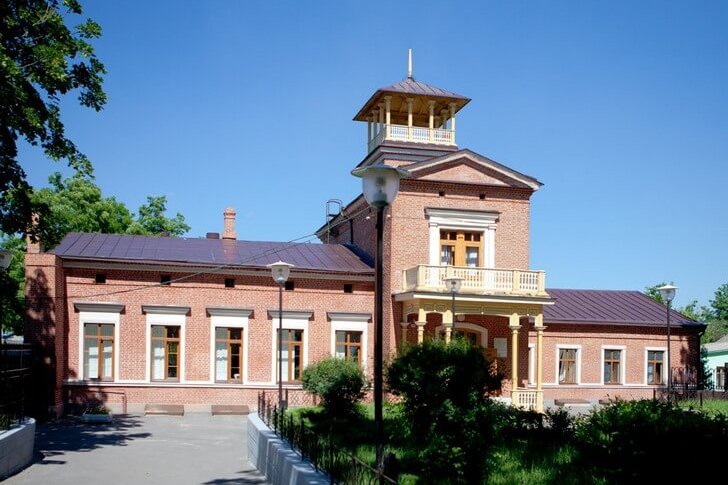
Church of St. Nicholas
An Orthodox church founded in the 18th century at the request of Rear Admiral F. A. Klokachev, commander of the Azov Flotilla. The temple was built by the sailors, who in the future became its main parishioners. Part of the building was made of wood, the other part was made of stone. All wooden structures were destroyed during the Second World War, and in 1957 the upper tiers of the bell tower were blown up. The building was restored in the 1990s.
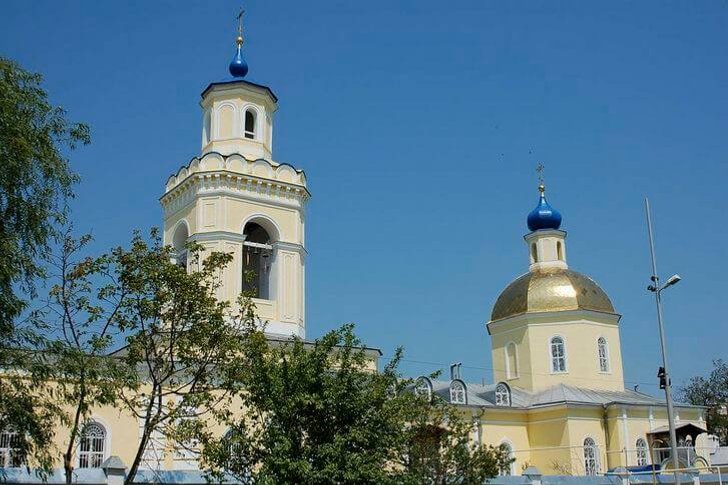
Cell of St. Paul of Taganrog
St. Paul of Taganrog is a person revered in the Orthodox tradition. It is believed that as a gift from God, he received the ability to heal people. The blessed one was born in the Chernigov province, but the ways of the Lord brought him to Taganrog. The house in Turgenevsky Lane, where the elder spent his last years of life, is now called the cell of St. Pavel Taganrog. Today, this modest little hut is a popular place of pilgrimage.
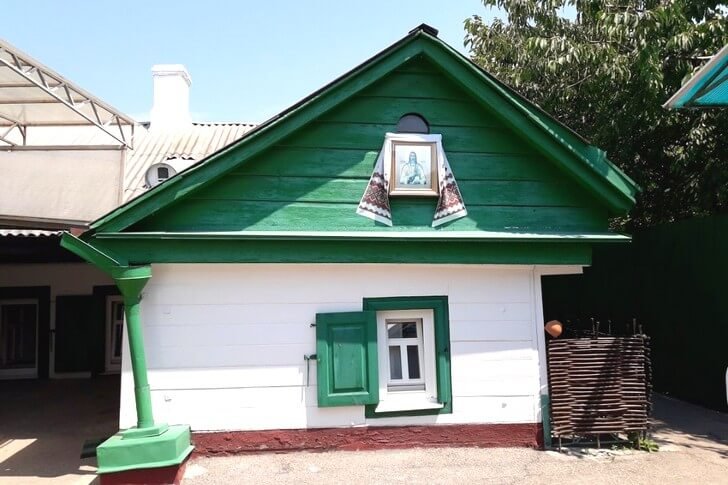
Monument to Peter I
The monument in honor of the first Russian emperor was erected in 1903. It represents the figure of Peter in ceremonial attire with the famous cocked hat on his head, mounted on a granite pedestal. The composition stands in the middle of a flower bed. The sculpture project was created by the St. Petersburg master M. M. Antokolsky, the statue was cast in Paris. The monument is located at the entrance to Komsomolsky Square.
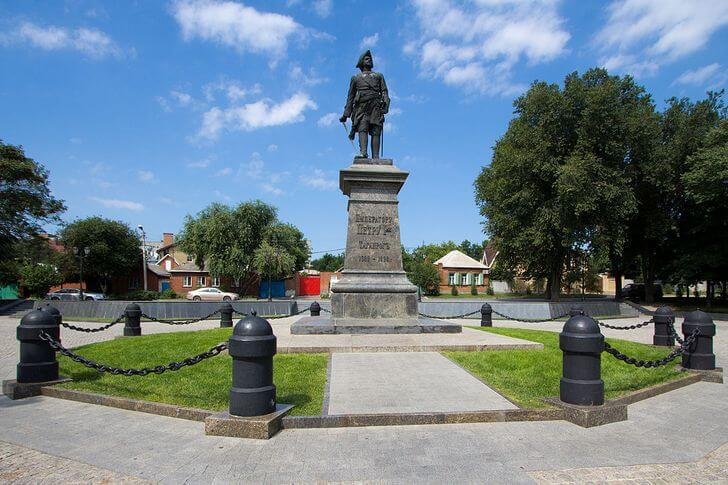
Monument to Alexander I
The monument was erected in 1831. The original sculpture was an emperor dressed in a general's uniform, trampling a snake with his foot. The monument had no chance of surviving in Soviet times - at first it was dismantled, and then it was poured and the metal was used for production needs. The monument was restored in 1998 at the expense of the Russian Credit Bank, removing some of the details of the original image - a snake and cupids.
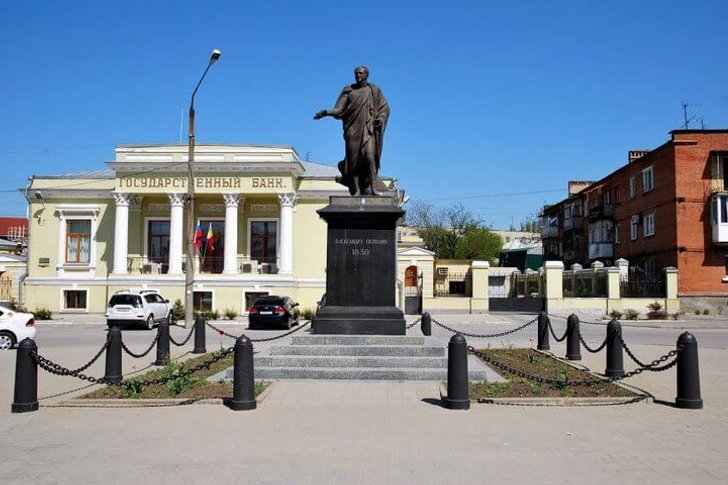
Monument to A.P. Chekhov
The monument in honor of the writer adorned the city streets in 1960. It was made by the sculptor I. M. Rukavishnikov. Together with the pedestal, the statue reaches a height of 6 meters. The idea to perpetuate the image of A.P. Chekhov came to the authorities under the tsar, but the idea was never implemented, and then, against the backdrop of a change of power, wars and the building of communism, it was not at all up to it.
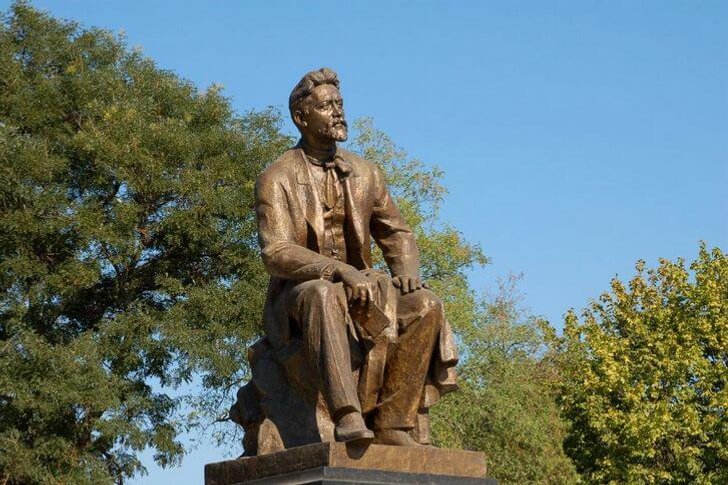
Sundial
The sundial was installed in 1833 on one of the city streets. They are a structure on a stone pedestal. The main element of the chronometer is a metal rod, whose shadow indicates the time depending on the position of the luminary. The Taganrog clock is the oldest mechanism of this type in Russia. Its last renovation took place in 2007.
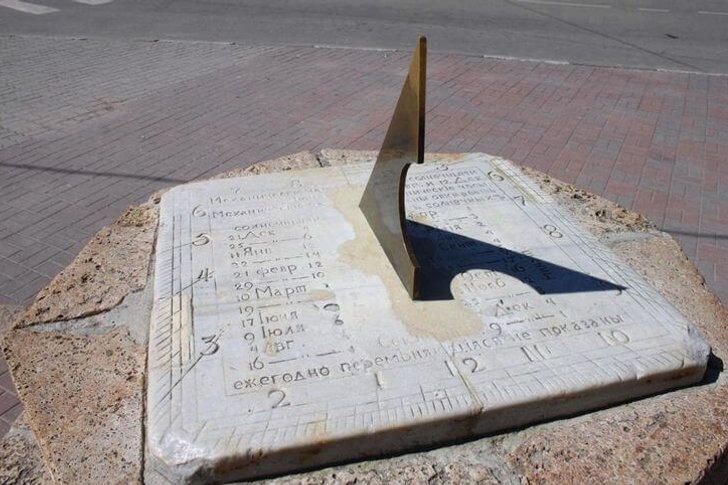
Park of Culture and Leisure named after Gorky
A city park with a 200-year history, founded at the very beginning of the 19th century as a Pharmacy Garden. In addition to medicinal plants, vineyards, fruit and ornamental crops were planted on its territory. In 1909, the plantations were completely cut down, in fact, creating a new garden. In Soviet times, the green zone was awarded the title of the best park of culture and recreation several times.
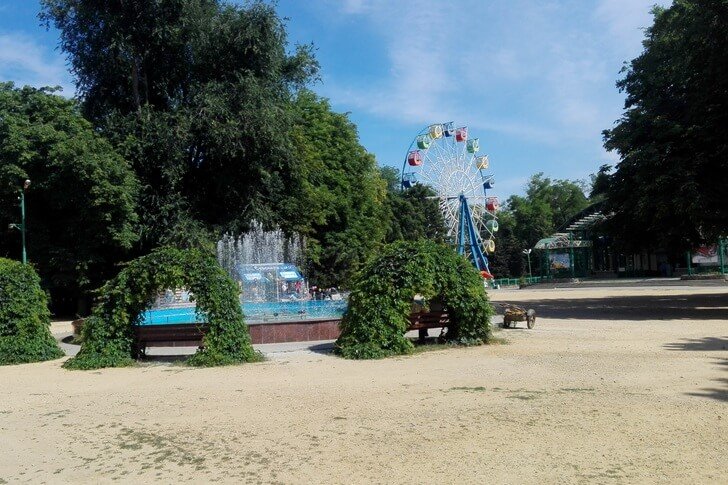
Pushkinskaya embankment
The city embankment is a landscaped section of the coastline of the Sea of Azov. On the plans of the city, it has existed since 1808, but systematic work on its construction began almost 30 years later. In the middle of the 20th century, a major reconstruction was carried out, as a result of which the sidewalks were asphalted, the boulevard was redesigned, and lanterns and benches were placed for rest. On the eve of the 300th anniversary of Taganrog, the embankment was reconstructed again.
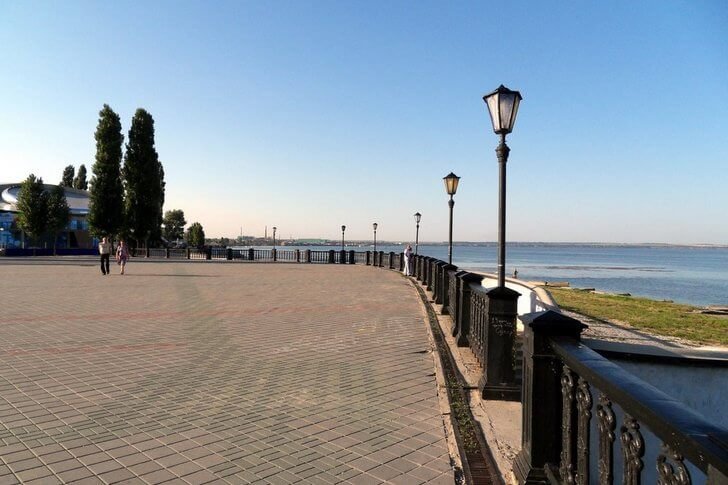
seaside park
City park, formed in the 1960s on the site of an abandoned brick factory quarry. It was created by the workers of urban enterprises. After 10 years, about 3 thousand trees and several thousand shrubs grew on the territory. The park prided itself on its collection of roses and other decorative flowers. The zone is located on the seashore, a stone staircase leads to the equipped beach, which is very convenient for visitors.

Pavlovsk fortress
A defensive structure of the early 18th century, which is an example of military engineering construction. The fortress was a rectangular structure, surrounded by a fortified earth rampart, designed to accommodate a garrison of 500 soldiers. The building was partially destroyed in pursuance of the Prut peace treaty. Today, tourists can see the remains of the fort, located near the village of Gaevka.

Memorial of Glory on the Sambek Heights
Memorial complex dedicated to the fighters of the 130th and 416th rifle divisions, which are also known as "Taganrog". In 1943, these units stopped the enemy advance on the Sambek Heights. The monument is made in the form of walls on which figures of soldiers are carved. It is installed on a wide platform, where the alley laid with slabs leads. The Eternal Flame is a part of the architectural ensemble.
